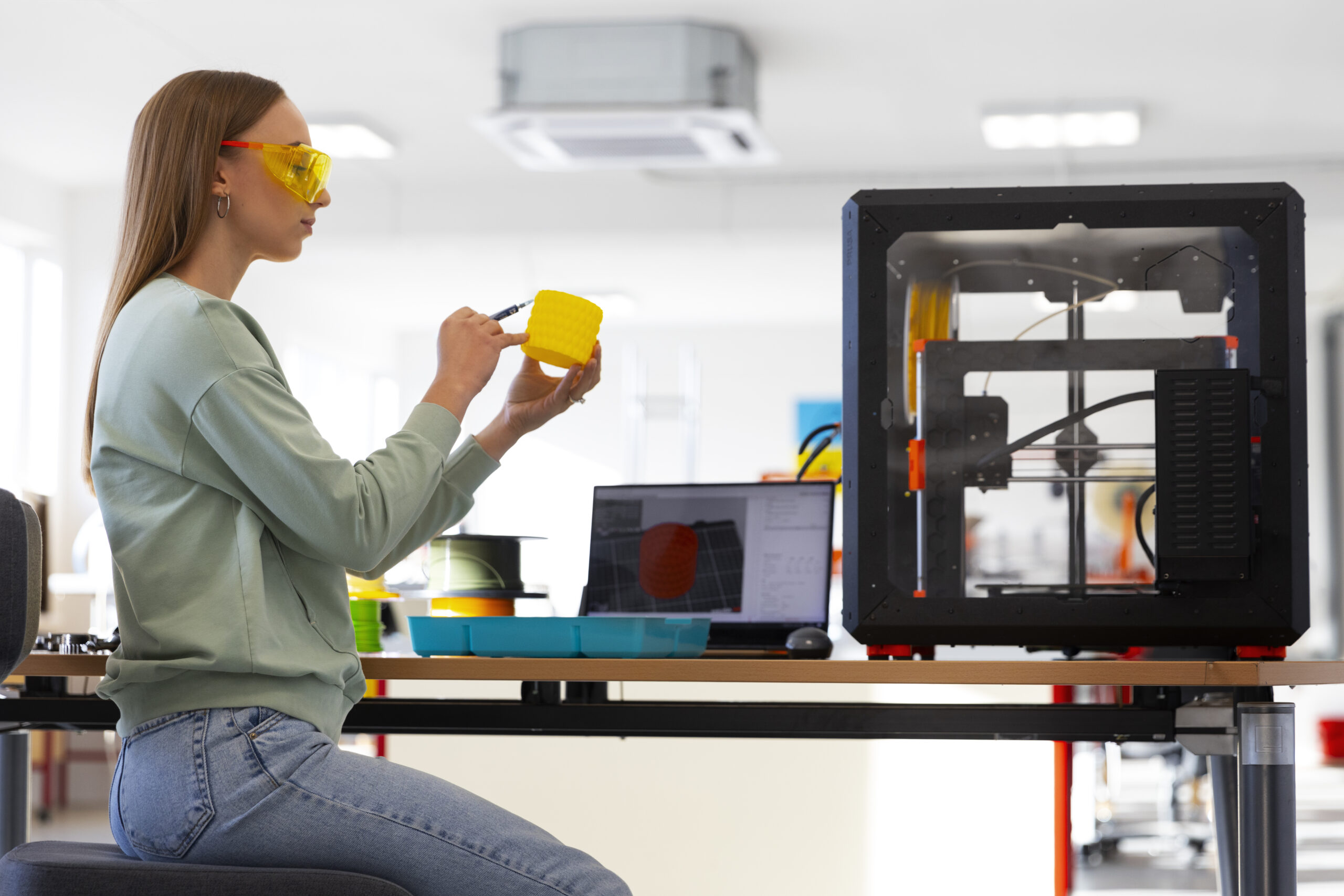The Transformative Role of 3D Printing in Modern Manufacturing and Prototyping
Introduction
In the ever-evolving landscape of technology, 3D printing has emerged as a revolutionary force, reshaping how industries approach manufacturing and prototyping. Also known as additive manufacturing, 3D printing builds objects layer by layer from digital designs, offering unprecedented flexibility and efficiency. This blog explores how this technology is transforming traditional practices, enabling innovation, and driving the future of production.

1. Accelerating Prototyping: Speed Meets Precision
Prototyping is the heartbeat of product development, and 3D printing has supercharged this process.
Rapid Iterations: Traditional prototyping methods, like CNC machining or molding, can take weeks and incur high costs. With 3D printing, designers can turn concepts into physical models within hours, allowing for quick testing and refinement.
Cost Efficiency: Eliminating the need for expensive tooling, 3D printing reduces upfront costs, making it ideal for startups and small businesses.
Complexity Without Compromise: Intricate geometries that were once impossible or prohibitively expensive to prototype are now achievable, empowering engineers to push creative boundaries.
Example: Automotive companies like Ford use 3D printing to prototype parts such as engine components, slashing development time by up to 50%.
2. Revolutionizing Manufacturing: Customization and Beyond
Beyond prototyping, 3D printing is redefining mass production and bespoke manufacturing.
Mass Customization: Industries like healthcare leverage 3D printing to create personalized solutions, such as patient-specific dental implants or prosthetics tailored to individual anatomy.
Lightweight, Stronger Designs: Aerospace giants like GE Aviation produce fuel-efficient turbine parts with complex internal structures, reducing weight while maintaining strength.
On-Demand Production: Companies can manufacture parts locally and as needed, minimizing inventory costs and supply chain disruptions—a lesson learned during the COVID-19 pandemic when 3D-printed PPE filled critical shortages.
Example: Invisalign uses 3D printing to produce millions of custom clear aligners annually, showcasing scalability in personalized healthcare.
3. Industry-Specific Breakthroughs
Healthcare: Bioprinting tissues and organs is on the horizon, while surgical tools and implants are already commonplace.
Construction: Firms like ICON 3D-print affordable housing structures in days, addressing global housing crises.
Consumer Goods: Brands like Adidas create 3D-printed midsoles for performance footwear, merging innovation with sustainability.
4. Sustainability: A Greener Approach
3D printing promotes eco-friendly practices by:
– Reducing material waste (unlike subtractive methods).
– Enabling local production to cut transportation emissions.
– Using recyclable materials like biodegradable plastics and metal powders.
5. Challenges and the Road Ahead
While transformative, 3D printing faces hurdles:
-Material Limitations: Not all industrial materials (e.g., high-temperature alloys) are yet printable.
-Scalability: Mass production speeds lag behind traditional methods for high-volume orders.
-Cost Barriers: Industrial-grade printers remain expensive, though prices are falling.
Future Trends: Advances in multi-material printing, AI-driven design optimization, and faster printing technologies promise to overcome these challenges, expanding 3D printing’s reach.
Conclusion
3D printing is no longer a futuristic novelty—it’s a cornerstone of modern manufacturing and prototyping. By enabling rapid innovation, customization, and sustainable practices, it empowers industries to rethink what’s possible. As technology advances, its role will only grow, cementing its place as a catalyst for the next industrial revolution.













